Crow Hand Puppet
$22.99
![]() Free shipping within 3 days
Free shipping within 3 days
![]() Easy returns within 30 days
Easy returns within 30 days
![]() Shopping information security
Shopping information security
Only 22 left, hurry up.

Shipping is not available in United States (US).
3209, Crow Hand Puppet from Folkmanis
Crow Hand Puppet from Folkmanis, “The iconic black crow stars as a trickster in many stories and folktales. This intelligent corvid is represented well with the Folkmanis Crow puppet. Reflecting the classic silhouette in sleek jet black feathery plush, movable beak, and shiny legs, this puppet fools the eye and creates the illusion of a real live bird. Recommended for ages 3+. 11” Long,
Length:11″ Long
Width:5″ Wide
Height:8″ Tall
Weight:4 oz.
Puppet Type: HAND PUPPET
Puppet Birthday: 2024 January
Though Ravens are much larger than Crows, this crow would certainly be fun to enhance the Poem, “The Raven”, by Edgar Allen Poe!
Quote, The Raven, “Never More”!…
FUN FACTS ABOUT CROWS:
- American Crows are a familiar sight across the country, common everywhere except our hottest and driest deserts.
- Crows in folklore and fiction are often associated with trickery and death (a group of crows is, after all, called a “murder”)
- Crows and ravens are all members of the same genus, Corvus. There are more than 40 different species in the genus, spread out across every continent except South America and Antarctica, as well as several Pacific islands. We typically refer to the big ones as “ravens” and the smaller ones as “crows,” but there’s no real genetic basis for the two categories.
- Crows and ravens are some of the smartest animals in the world, with their intelligence considered on par with chimpanzees. Their intelligence has been recorded, including a captive American Crow dipping a cup in some water to moisten a container of dry food, and a wild crow ripping off a splinter of wood from a fence to try to spear prey in a hole.
- Crows are opportunistic eaters who use their intelligence to eat just about anything, from crops to other birds’ eggs. American Crows have been seen digging pits to forage for clams, distracting river otters to steal fish, dropping nuts on hard surfaces to open them, and stealing pet food from outdoor dog dishes.
- Crows crop thieving has made them enemies of farmers over the years. (Scarecrows and other figures meant to frighten crop-destroying birds go back centuries.)
- In the 1930s, there was even a brief attempt to reduce their numbers by popularizing them as a dinner item. A man in Tulsa, Oklahoma hosted a series of “crow banquets” to prove how tasty the birds were, impressing the governor so that he established a “Statehouse Crow Meat Lovers Association.” Luckily for the crows, however, eating crow never really caught on—the fad faded by the early 1940s.
- Crow communities can hold a grudge for generations. A team of researchers at the University of Washington captured American Crows in nets while wearing a caveman mask, then released them back onto campus. When the researchers later walked across campus wearing the same mask, the crows scolded and dive-bombed them. More than 10 years after capturing just seven crows, more than half of the crows on campus still raised the alarm at the sight of a caveman mask.
- Recent research shows that crows are known to hold “funerals” and “wakes.” When an American Crow finds the dead body of another crow, it will call out to alert others in the area, who will gather and begin to make a ruckus themselves. Researchers think the behavior helps crow communities learn about potential threats to avoid.
- Crows are particularly social and family-oriented birds. American Crows will form large flocks to forage at garbage dumps and farms during the day, and they roost in numbers ranging from hundreds to two million in the winter. They also form close family units of up to five generations. Yearlings and two-year-olds will even give their parents a hand with chick-rearing, helping to build the nest, keep it clean, and feed their mother while she’s sitting on the nest.
Be the first to review “Crow Hand Puppet” Cancel reply
Related products
$37.99
$42.99
$33.99
$43.99
$43.99
$38.99
$75.59

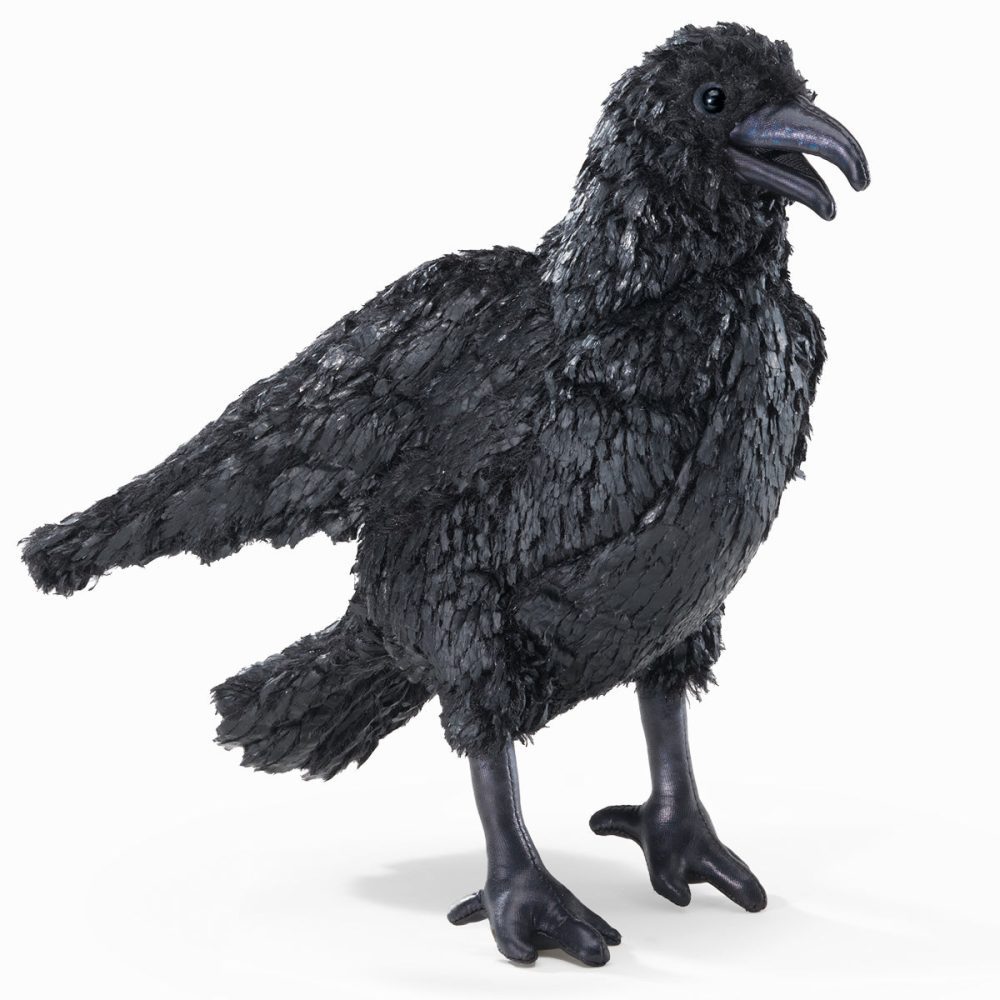
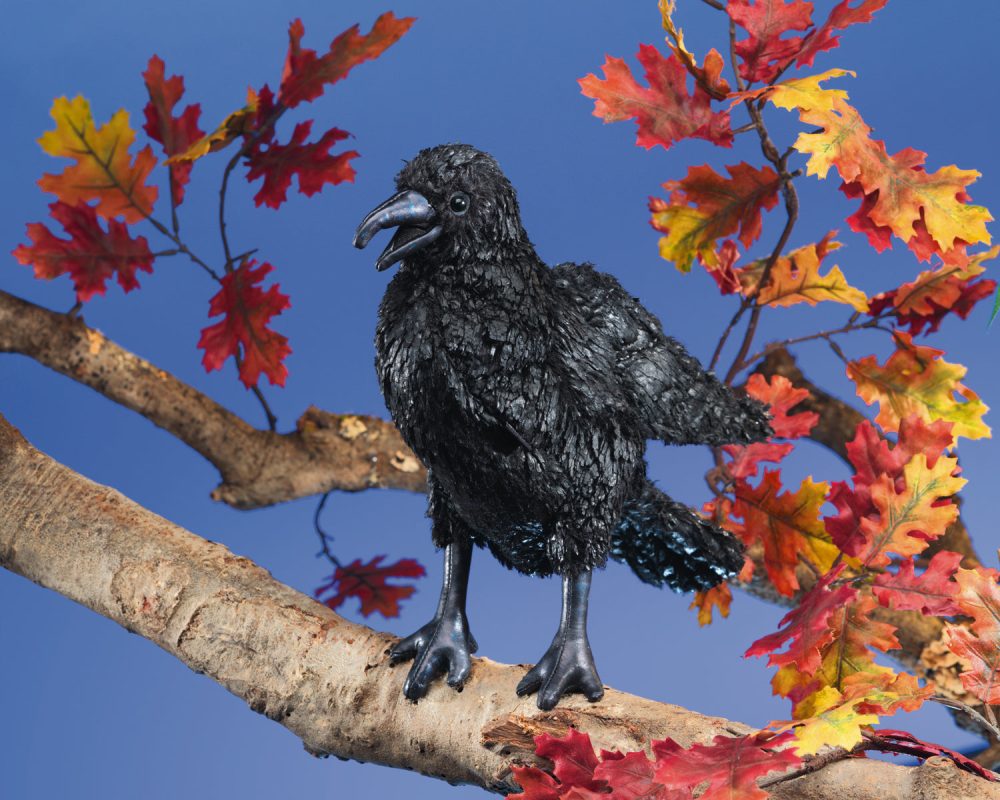
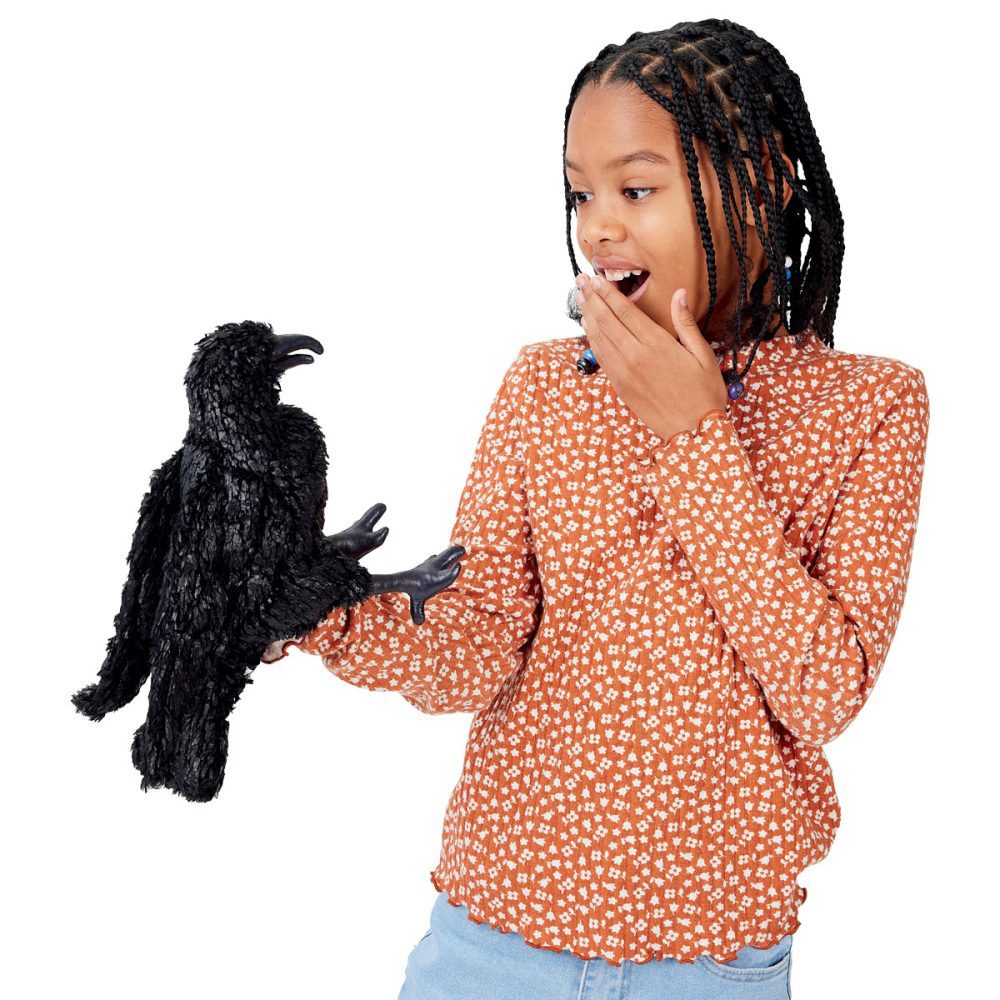
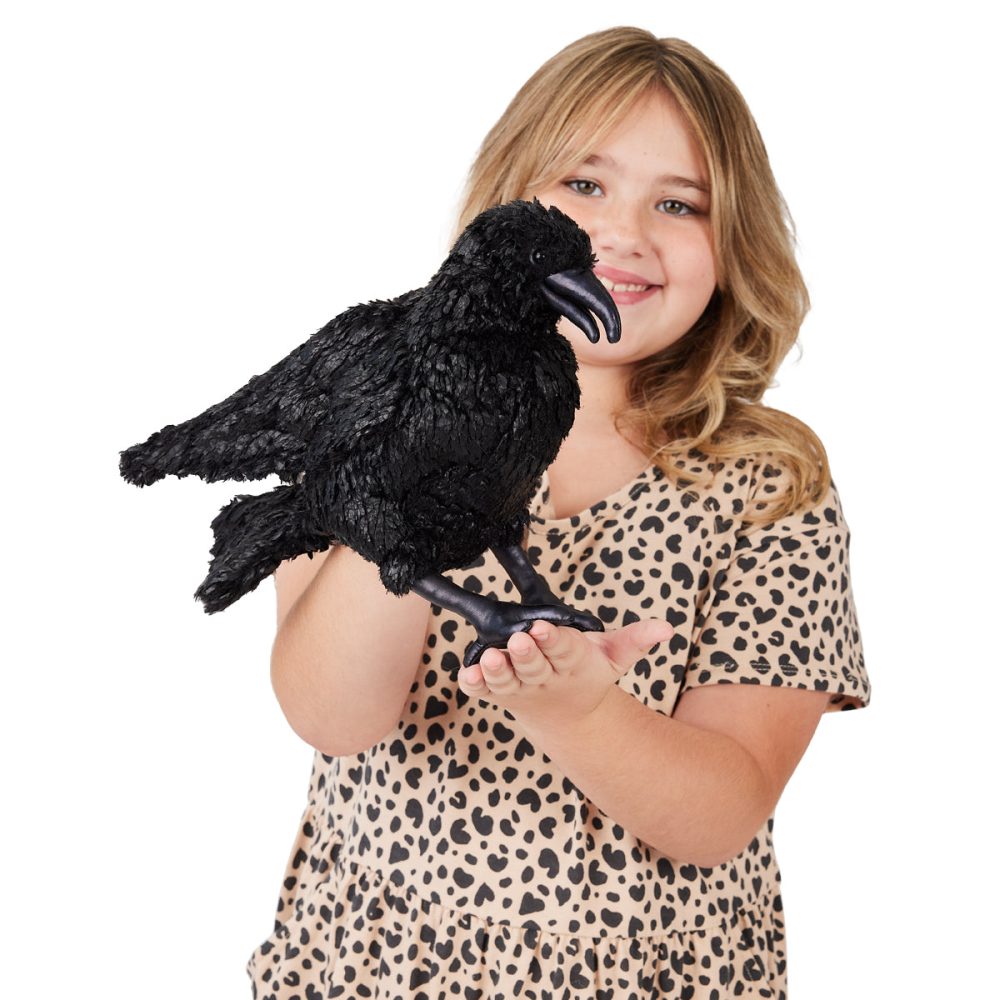
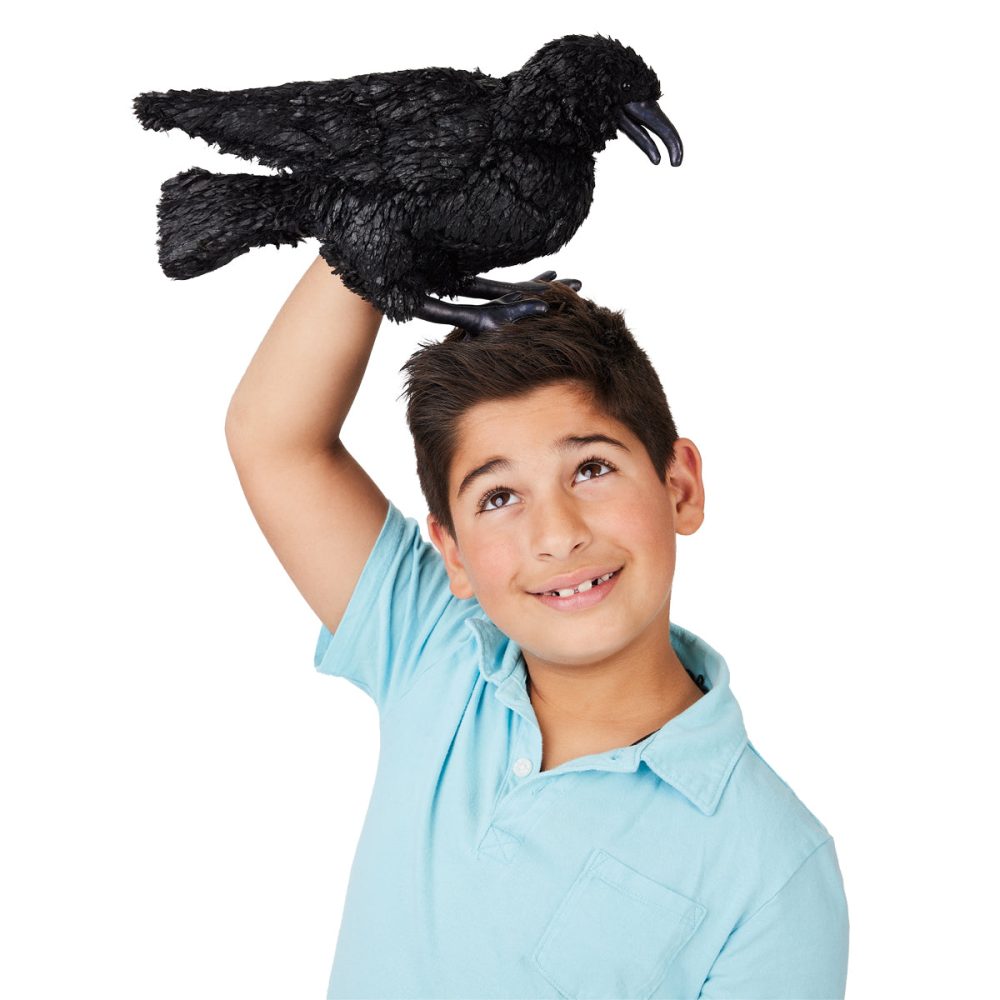
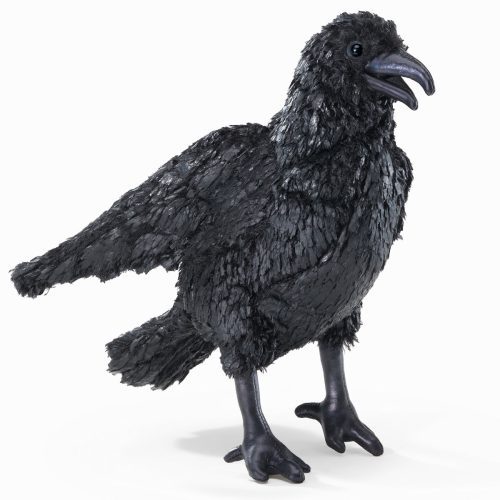
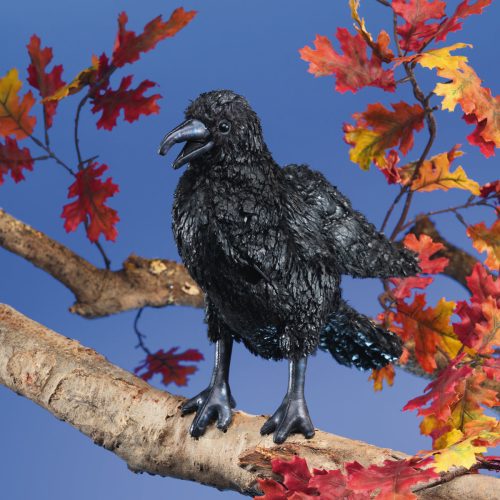
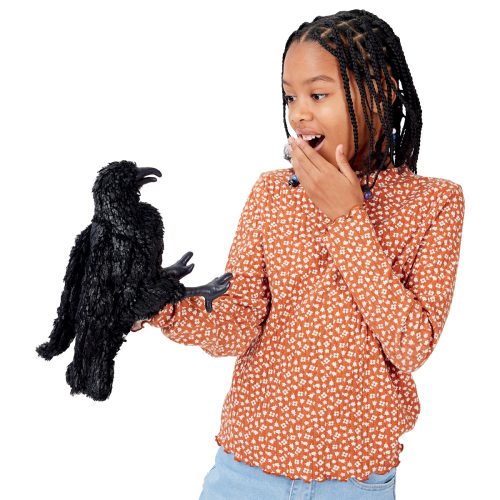
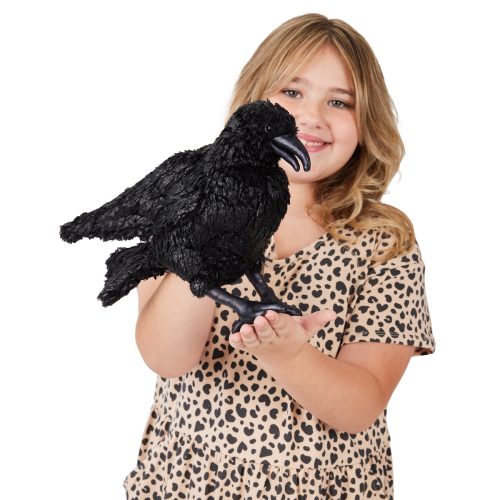
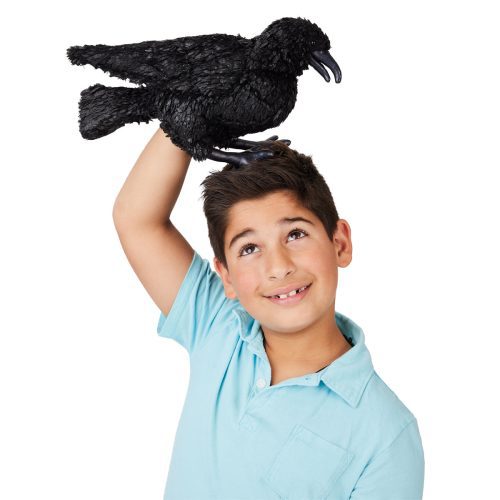
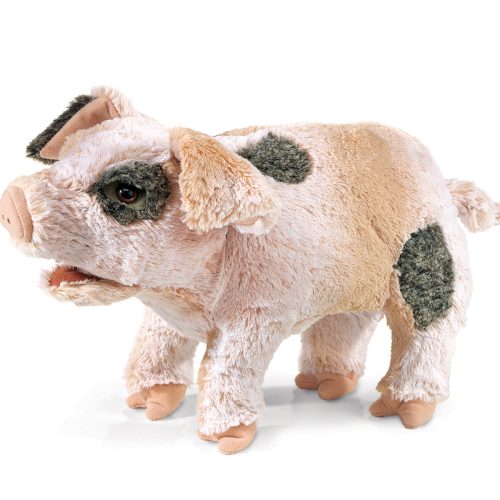



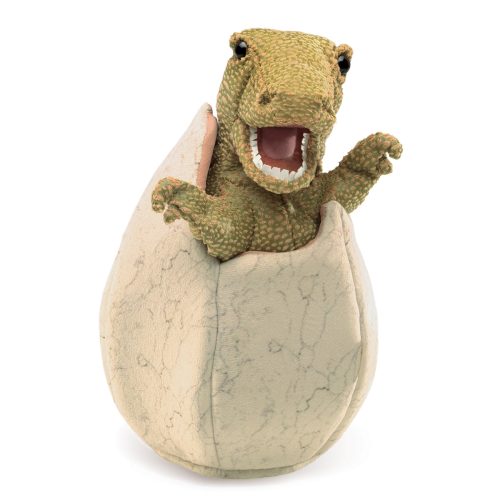
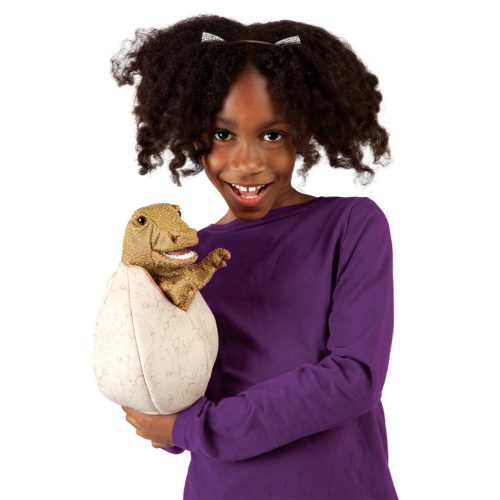
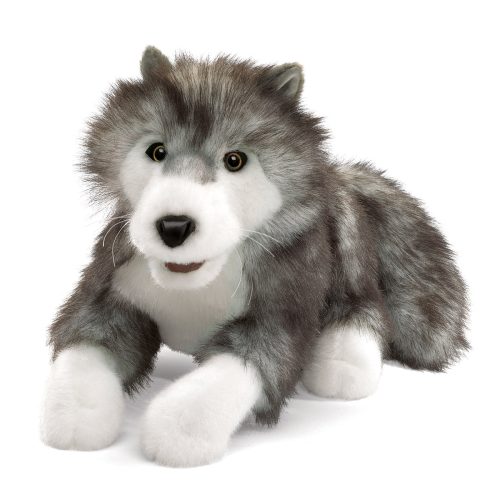



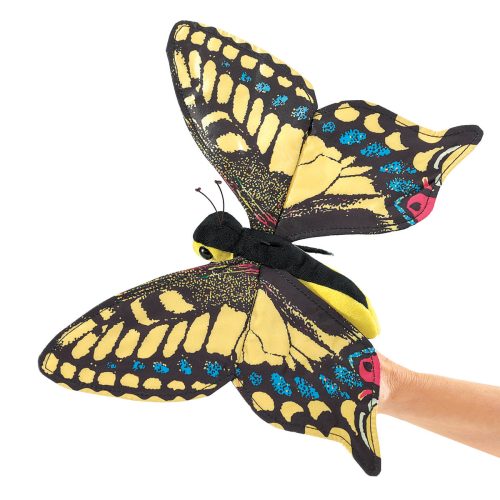
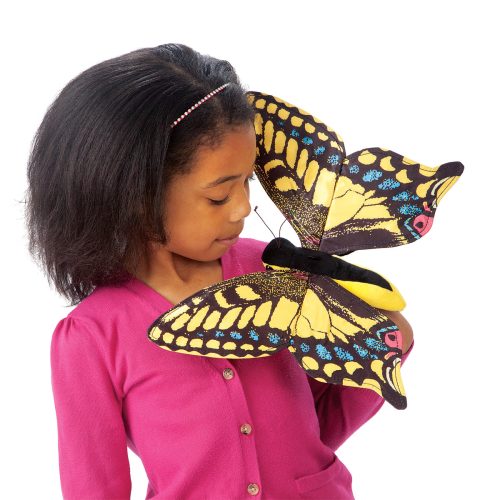
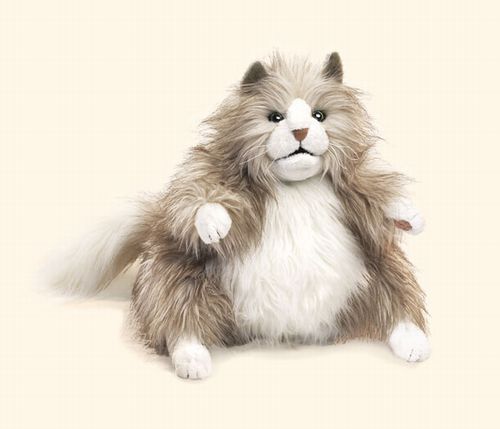
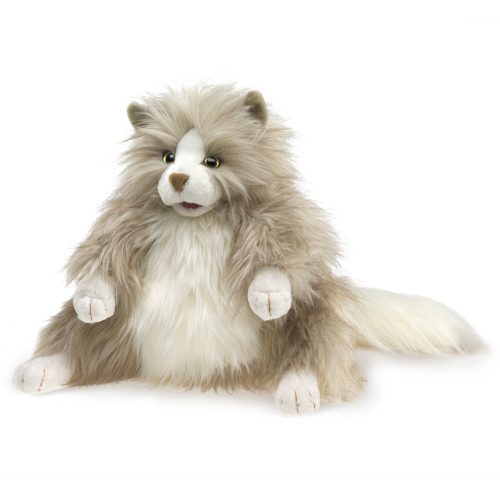


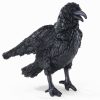
Reviews
There are no reviews yet.